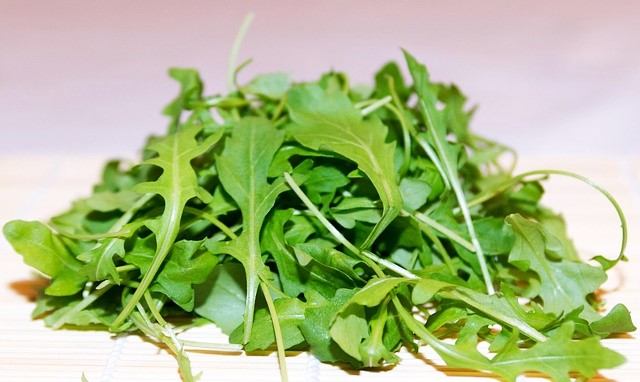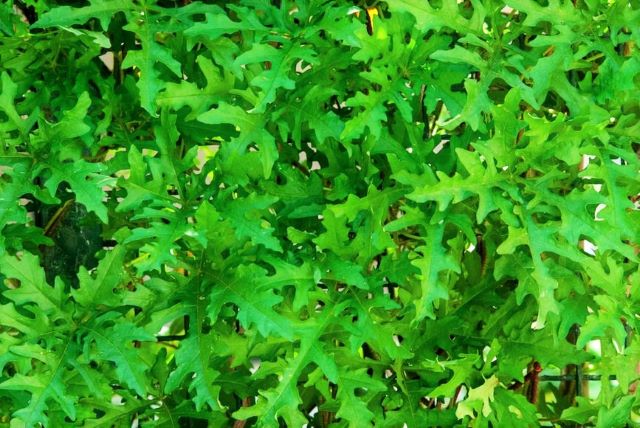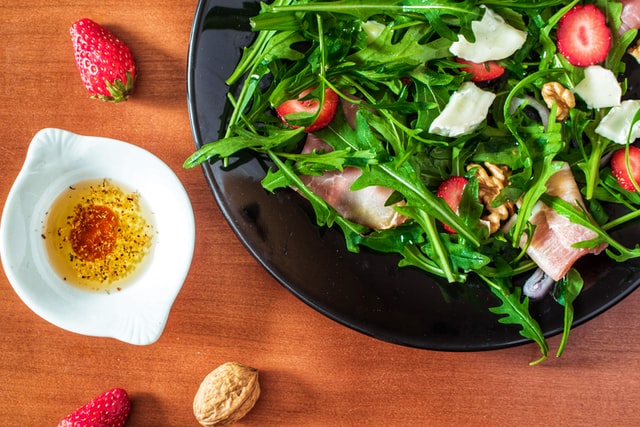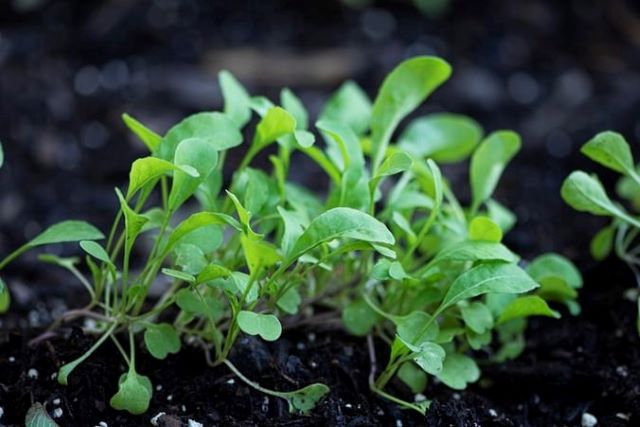Depending on your ability to tolerate spicy herbs, you will either find arugula delicious or eye wateringly bitter. Personally, I find arugula’s peppery taste adds just that little extra zing that can transform a salad or a pizza from being okay into something great. In this article, we will look at what makes arugula bitter along with ways to reduce arugula bitterness while still being able to enjoy the benefits offered by this versatile leafy plant.

Table of Contents
Why is Arugula Bitter?
The arugula plant generates a bitter taste as a defense mechanism against leaf-loving pests such as caterpillars, aphids and even humans. That bitter taste is caused by a chemical called glucosinolate which is carried through the leaves by a system similar to our veins.
If the tangy bite of arugula is more than you can tolerate, don’t write this plant off just yet.
Arugula is highly versatile and much of the controversy around bitterness comes down to personal taste.
Arugula is high in both sodium and potassium and even if you find the uncooked leaves too bitter, don’t lose sight of how useful this vegetable can be in your kitchen.
Its main advantage is that arugula can enhance the taste of slightly bland dishes, especially proteins. As well as being tossed into salads or sprinkled across a pizza, arugula is often used to accompany fish or cheese.
Avoiding Bitter Arugula

The first thing to understand is that the older it gets, the more bitter your arugula becomes. This again relates to the defensive use of glucosinolate. The larger the arugula plant becomes, the more leaf area it needs to protect from predation, and the more chemicals it will produce.
Harvesting Young Arugula Leaves To Reduce Bitterness
We can circumvent the problem of arugula bitterness to a large extent by harvesting the leaves while they are still small and therefore less peppery.
Ideally, you want to harvest your arugula leaves just before they reach the three-inch (7.5 cm) mark. This will mean that arugula is both young and tender, and less bitter.
You can simply snip off the outside arugula leaves with a pair of sharp scissors and leave the remainder of the plant growing. It will respond by putting out more tender arugula leaves meaning that the process can be repeated throughout the growing season.
If you harvest early in the morning, before the sun has time to hit the arugula plant, it will contain lower levels of glucosinolate.
The more mature arugula leaves are the most peppery. And if the plant is allowed to bolt, (flower and set seed) it will become pretty much inedible.
By keeping your arugula plant well-watered and regularly harvesting the small leaves it is less likely to bolt.
Choose Mild Arugula Varieties To Reduce Bitterness
Like most garden vegetables, breeders have vastly widened the range of cultivars available and you can opt for an arugula variety that is less bitter.
Astro II and Apollo are two of the mildest arugula varieties. Red Dragon has red veins which add a splash of color to salads. While Sylvetta is less prone to bolting which can be useful if you live in a very hot area or one where rainfall can be unreliable.
How To Use Bitter Arugula
Of course, you may not be gardening and producing your own arugula. If purchasing arugula leaves, it can be almost impossible to find out what variety you are being offered.
Short of popping an arugula leaf into your mouth to do a taste test for bitterness, you are pretty much at the mercy of your supplier. Many of who will disapprove of random tasting sessions!
All is not lost, however. According to how you choose to use your arugula, there are many ways to overcome the bitter experience.
If adding fresh leaves to a salad, keep the proportion of arugula low compared to other plants such as lettuce or spinach. This will provide that interesting peppery dynamic without it becoming overpowering.

Cooking With Arugula And Recipe Ideas
In cooked foods, arugula leaves can be blanched prior to use and this removes all traces of bitterness. Simply place the arugula leaves into a pot of boiling water for two minutes and then remove with a slotted spoon or sieve and soak in ice cold water for another two minutes.
If you sauté the arugula leaves in a pan of hot butter this will also reduce the bitter taste. Once lightly fried, the arugula leaves can then be added to whatever recipe you had in mind for it.
Or the arugula leaves can be cooked as a side dish like this recipe for Sautéed Arugula from Eating Well.
In recent years it has become common for arugula to be added as a topping to pizza. It is here that I think the love it or hate it controversy arugula generates probably came to the fore.
A handful of arugula leaves tossed onto a cooked pizza will be far more noticeable than if the leaves are cooked along with the pizza. Some people find the last-minute addition to be a delicious way of enhancing the flavor, while others are far less keen.

If you are a fan of arugula on pizza, here are a few recipes to try:
- Arugula and Prosciutto Pizza – from Olivia’s Cuisine.
- Arugula Tomato Cheese Pizza – from Half Baked Harvest.
Many recipes with arugula is commonly combine spinach, green vegetables, or goats’ cheese. Here are a few recipe ideas to try:
- Colorful Strawberry Arugula Salad – from Cookie and Kate.
- Arugula Pasta with Lemon & Parmesan – from Eating Well.
- Sauteed Spinach with Arugula, Pinenuts and Goats Cheese – from Jenn Cuisine.
Arugula also makes a nutritious additive when mixed into a smoothie.
- Delicious Arugula Smoothie Recipe – from Nutrition in the Kitch.
- Arugula Smoothie with Pineapple and Mango – from Bee’s Vegan Life
Try turning arugula into a delicious pesto with one of these recipes:
- Arugula Pesto – from NYT Cooking.
- How to Make Arugula Pesto – from Foodie Crush.
Arugula Growing Tips

Arugula is a great plant to have in the garden. It is easy to grow and requires little in the way of attention.
With your own supply of arugula on hand, you can choose the variety that corresponds to your own taste. And harvesting frequently will ensure a ready and fresh supply.
Arugula needs a moist but free draining soil and plenty of sun.
If you can offer these two conditions then all you need to do is choose your favorite arugula seeds and sow them at a depth of about a quarter of an inch.
Arugula will thrive in US hardiness zones from 2 right through to 11 and you can be harvesting in just five to six weeks.
Don’t let the soil dry out or the plant will panic and bolt. Healthy soil will be able to supply all the nutrients the arugula plant should need. You can achieve this with the addition of homemade compost and aged manure prior to planting your arugula.
And look out for slugs and snails attempting to get to the tender young arugula leaves before you do.
Further reading:
- Spots on Arugula? Causes and Solutions
- Why Is My Lettuce Flowering? Causes and Solutions
- Why is Celery Bitter (And How to Fix It)
- What Makes Eggplants Bitter (and how to fix it)
- Why Is My Rutabaga Bitter? Here’s What You Need To Know
- Can You Eat Unripe Avocados? Answered!
- Why Is My Asparagus Bitter?
- Why Is My Daikon Bitter? Answered!
